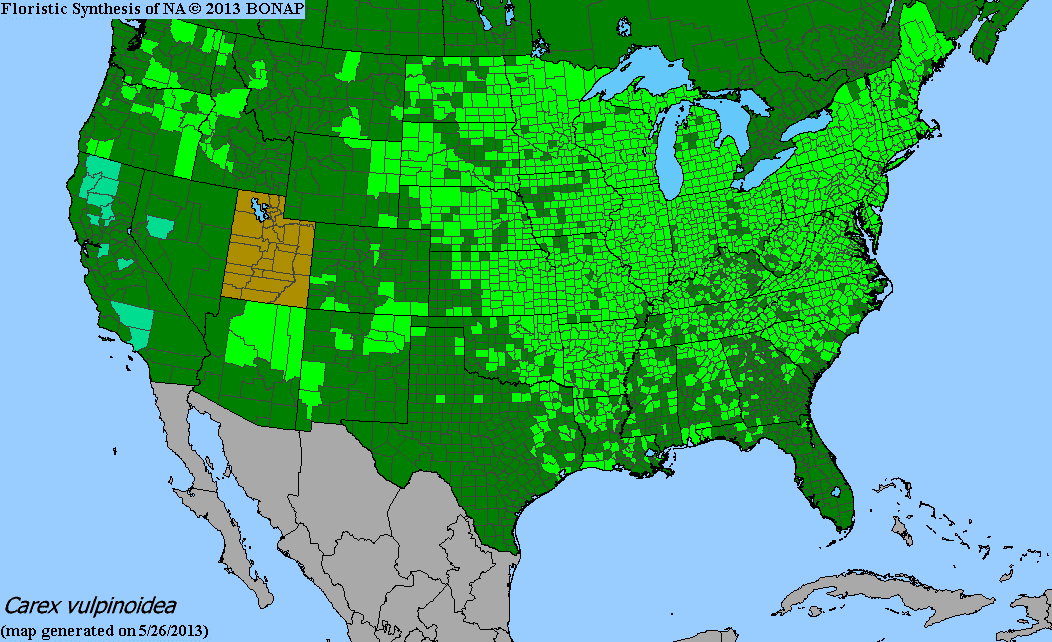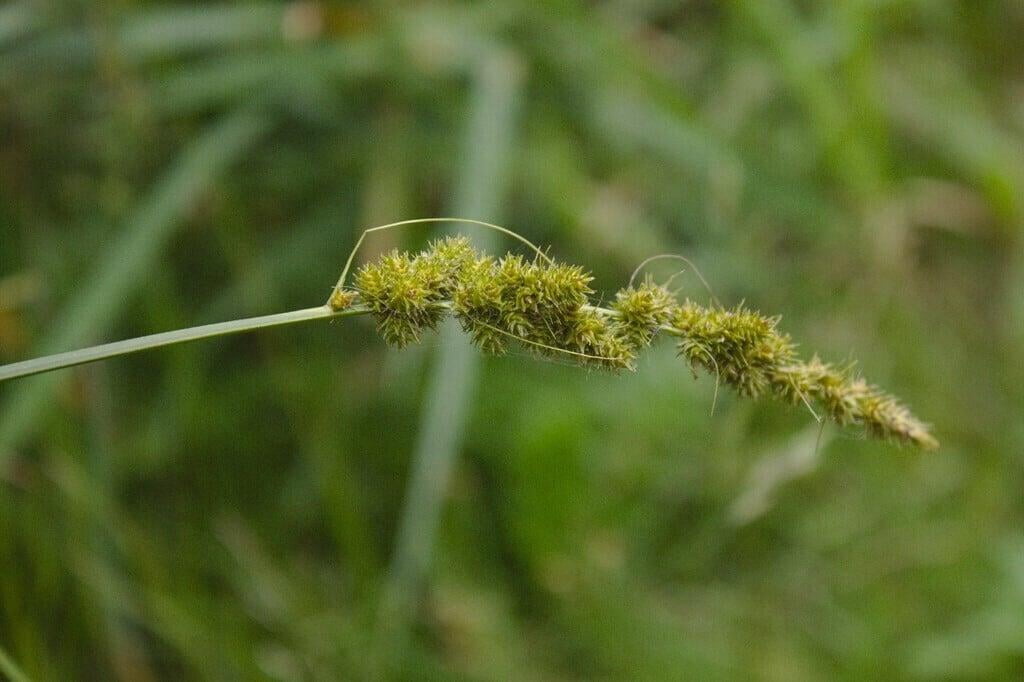Carex vulpinoidea
Fox sedge Description:
Carex vulpinoidea, commonly known as fox sedge, is a perennial plant native to North America. It belongs to the sedge family (Cyperaceae) and typically grows in wetland habitats such as marshes, swamps, and along stream banks.
The plant forms dense clumps of grass-like foliage that can reach up to 3 feet in height. The stems are triangular in cross-section and typically bear several seed heads that are reddish-brown in color. The leaves are narrow, tapering to a sharp point, and can range in color from green to bluish-green.
Fox sedge is an important plant for wildlife, providing habitat and food for a variety of animals, including waterfowl, songbirds, and small mammals. It is also commonly used in landscaping for its ornamental value, as well as for its ability to control erosion and purify water.
Fox sedge prefers moist to wet soil and can tolerate both sun and shade. It is a drought-tolerant plant that can grow in a variety of soil types, making it a versatile choice for meadow and prairie gardens.
Native Range:
Fox sedge is found across Minnesota as well as the United States, with few exceptions.
Standard Plant Information:
Plant height: 1' - 3'
Fruiting time: June - July
Preferred habitat: Does well in full sun and moist to wet soil. Often found in marsh edges, along shores, wet ditches, and wet meadows
Sowing:
For most homeowners, the best option is to scatter seed on the ground by hand broadcasting at a minimum of 15-16 pls lbs per acre. For even coverage, we recommend that you broadcast seed in perpendicular rows across the site to ensure even coverage.
Planting:
Simply dig a hole in the soil slightly larger than the plant’s roots. Ensure that the soil line of the plant is maintained during the transfer (i.e. the plant should be at the same level with the ground as it was in the pot). Pack any loose dirt back around the plant and make sure you water it well the same day to ensure it has the best chance of survival.










